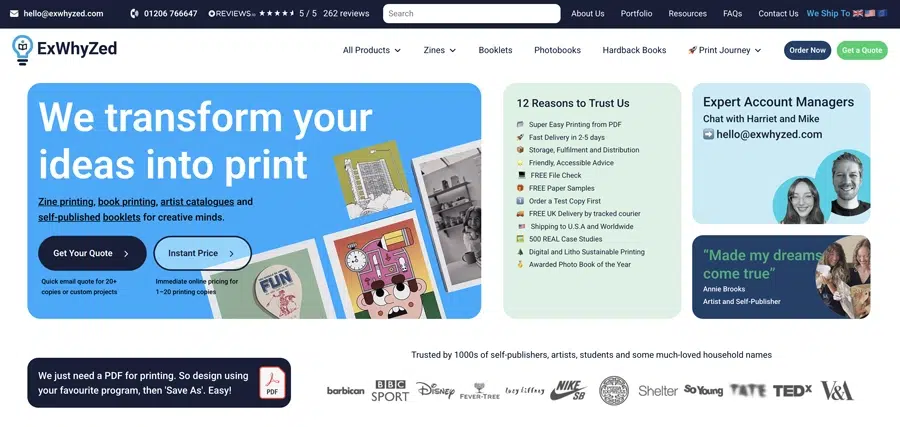Top Self-Publishing Tools for Success


The world of publishing has fundamentally changed in the recent past, primarily due to advancements in technology. For aspiring authors, the path to seeing their work in print is no longer narrowed down to traditional publishing houses, irrespective of their geographic locations. Self-publishing has opened up opportunities, allowing authors the freedom to bring their words alive at their pace, maintaining creative control and earning potentially larger profits. This blog explores self-publishing tools, platforms, marketing strategies, and financial considerations needed to navigate this game-changing landscape effectively.
Self-Publishing Tools You Need to Know About
Self-publishing might seem daunting at first, especially with the many tasks involved – writing, editing, designing, formatting, marketing, and selling your children’s books. Fortunately, many tools have emerged to help authors in this process, including hiring freelancers or professional illustrators for their own children's books. These remarkable publishing services and utilities simplify the different phases of self-publishing a children's book, ensuring a smooth transition from a manuscript to a saleable product, such as creating captivating illustrations.
Writing & Editing

1. Scrivener
Scrivener is one of the most powerful writing tools for authors, particularly for long-form projects like novels and nonfiction books. It allows you to:
- Organize your manuscript with a binder system.
- Split your book into scenes and chapters for easy navigation.
- Store research, notes, and images in one place.
- Format and export to multiple formats, including ePub, Kindle, and PDF.
2. Grammarly
Grammarly is an AI-powered grammar and spell checker that helps improve clarity, tone, and engagement. It:
- Identifies grammar, punctuation, and spelling mistakes.
- Offers style and readability suggestions.
- Has a plagiarism checker (premium version).
- Works as a browser extension, desktop app and integrates with Microsoft Word and Google Docs.
3. ProWritingAid
A more advanced editing tool compared to Grammarly, ProWritingAid:
- Provides in-depth reports on sentence structure, readability, and overused words.
- Offers real-time feedback on grammar and style.
- Integrates with Scrivener, Word, and Google Docs.
4. Hemingway Editor
Hemingway is designed to improve readability and clarity by:
- Highlighting long, complex sentences.
- Identifying passive voice and adverbs.
- Assigning a readability grade level to your text.
- Offering a simple web-based or desktop app.
Formatting & Design

5. Vellum (Mac Only)
Vellum is a premium book formatting tool that makes it easy to create professional-looking ebooks and print books. It allows you to:
- Import your manuscript and format it effortlessly.
- Generate files for Kindle, Apple Books, and other platforms.
- Create print-ready PDFs for paperbacks and hardcovers.
6. Atticus
A cross-platform alternative to Vellum, Atticus works on both Mac and Windows. It:
- Combines writing, formatting, and exporting features in one tool.
- Offers a user-friendly interface for designing ebooks and print books.
- Includes pre-made themes and customization options.
7. Reedsy Book Editor
Reedsy is a free, web-based tool that allows authors to:
- Write and format books without additional software.
- Export in ePub or PDF formats.
- Collaborate with editors and co-authors.
8. Canva
Canva is a popular design tool for creating book covers, promotional graphics, and marketing materials. It:
- Offers thousands of customizable templates.
- Provides free and premium stock images.
- Features drag-and-drop design tools.
9. Adobe InDesign
A professional design tool, Adobe InDesign is used for complex book layouts, such as:
- Illustrated books, magazines, and textbooks., featuring elements like Reynard the fox.
- Creating print-ready and digital files with precise control over typography and layout.
- Advanced formatting for complex book designs.
Cover Design
10. BookBrush
A beginner-friendly tool for authors to create, BookBrush helps in:
- Book covers (ebook, paperback, and hardback).
- Social media graphics, book trailers, and ad designs.
- 3D mockups of books for promotional use.
11. DIYBookCovers
DIYBookCovers tool provides:
- Cover templates for self-designing book covers.
- Free and premium options for indie authors.
- Guides and tutorials on effective cover design.
12. Fiverr & 99designs
If you prefer hiring a professional, Fiverr and 99designs platforms allow you to:
- Find freelance designers for custom book covers.
- Choose from different pricing tiers based on experience and quality.
- Get multiple design options through contests (99designs).
Publishing Platforms

13. Amazon Kindle Direct Publishing (KDP)
The most widely used self-publishing platform, KDP allows you to:
- Publish ebooks and paperbacks.
- Access KDP Select for exclusivity benefits, including Kindle Unlimited.
- Earn up to 70% royalties on ebooks.
14. IngramSpark
Best for wide print distribution, IngramSpark:
- Provides access to bookstores and libraries worldwide.
- Offers hardcover book options.
- Charges setup fees but offers better distribution than KDP.
15. Draft2Digital
Draft2Digital is a user-friendly distribution service that:
- Distributes ebooks to Apple Books, Barnes & Noble, Kobo, and more.
- Offers free book formatting.
- Pays royalties without exclusive contracts.
16. Smashwords
An alternative ebook distributor, Smashwords:
- Offers wide distribution options, including library networks.
- Allows authors to set their own pricing and promotional discounts.
Marketing & Promotion

17. BookBub
One of the most powerful book promotion platforms, BookBub:
- Reaches millions of readers through daily book deals.
- Offers paid book promotions to increase visibility.
- Requires an upfront investment but has a high ROI for authors.
18. KDP Select & Kindle Unlimited
Amazon’s exclusive programs:
- Allow Kindle Unlimited subscribers to read your book for free.
- Pay authors based on pages read.
- Provide promotional perks like Kindle Countdown Deals.
19. StoryOrigin & BookFunnel
StoryOrigin and BookFunnel tools help authors:
- Build email lists by offering reader magnets (free books).
- Distribute ARCs (Advance Review Copies).
- Organize newsletter swaps with other authors.
20. MailerLite & ConvertKit
MailerLite and ConvertKit Email marketing tools that:
- Help build and manage an author email list.
- Offer automation and segmentation for targeted marketing.
- Provide landing pages and signup forms.
Marketing and Promoting Your Self-Published Book
Once your book is published, the work doesn’t end there. The success of your book significantly hinges on how effectively you market and promote it. In the vast ocean of published books, ensuring yours stands out and reaches the right audience is imperative. While traditional publishing assigns a marketing team for your book, self-publishers must don this hat themselves. But fret not; there’s a range of successful strategies and avenues to explore.

Building an Audience
Creating a successful self-published book starts well before its release date — building connections, gaining followers, and growing an audience who eagerly anticipates your new work, including valuable book reviews, press releases, and a robust marketing campaign. Today, authors can cultivate a following long before their book hits the shelves by effectively harnessing social media and content marketing.
Authors can use platforms such as Facebook, Twitter, Instagram, and Goodreads to create a strong online presence. Regular posting, engaging with your followers, sharing snippets from your upcoming book, or insights into your writing process can help create buzz around your work. Encourage your followers to share your posts, thereby reaching a larger reader base.
Social Media and Content Marketing
Social media has become a bustling platform for authors to connect with readers personally, share their creative journey and promote their work. Authors can leverage platforms like Facebook, X, formerly known as Twitter, or Instagram, to share content that hooks readers' interest — tidbits of upcoming projects, glimpses into the writing process, cover reveals, launch dates, signings, and more.
Content marketing, developing and sharing relevant, useful, and engaging content, is another powerful strategy. This could be in the form of blogs, guest posts, podcasts, or videos. Tools like YouTube or hosting your podcast can allow you to explore diverse and creative ways of connecting with your audience and stirring interest in your book.
Read more about promoting your new book on social media with ExWhyZed!
Setting Up Book Events
There's something special about meeting your favourite author in person, hearing about their experiences, and getting your book signed that online connections cannot replace.
As a self-published author, you have the opportunity to organize book events, signing sessions, or readings. Local libraries, book clubs, or schools are excellent places to hold such events. Engaging in discussions, sharing anecdotes from your journey, reading passages from your book, and inviting questions can provide a more personal, immersive experience for your readers. However, do remember such events require planning and promotional efforts for a successful turnout.
Financial Aspects of Self-Publishing
Publishing a book comes with its fair share of costs – production, advertisement, promotion, and more. Congratulations! These financial considerations include whether to invest in print books or ebooks and are often decided based on how much you're willing to invest in your book's success. Let's delve into the details of understanding these expenses, potential revenue streams, and budget planning to ensure a profitable venture.
Understanding the Expenses
Self publishing a children's book in the UK and Australia does call for an upfront cost - one needs to spend money before making money. From writing to design and publishing, each stage comes with its associated costs, including the cost of printing, vanity publishing, and marketing at local bookstores.
Here's a breakdown:
| Stage | Potential Cost |
|---|---|
| Writing Software | Free to $200 |
| Editing Tools | Free to $500 |
| Cover Design | $100 to $500 |
| Formatting | Free to $200 |
| Printing | $5-$20 per copy depending on volume |
| Advertising | Variable depending on budget |
| Promotion | Variable depending on the mediums used |
Writing software typically ranges from free (like Google Docs) to paid versions like Scrivener. Editing tools can also be free or paid, depending on the tool. Cover designs can range from a hundred to several hundred dollars, depending on the designer and the complexity of the design. Formatting your manuscript for publishing can be done with free tools or may require a professional, particularly for more complex formatted books. If you don’t have much time to create your marketing strategy, consider simpler promotion methods. Printing costs will be per copy, decreasing as volume increases. Advertising and promotion costs heavily depend on your approach and strategy.
Remember, the rewards of self-publishing a children's picture book are potentially high, offering significantly higher revenue per book than traditional publishing. However, the upfront costs have to be taken into consideration when you're deciding on the budget.
Revenue Streams
Self-published authors generally have a plethora of revenue streams. You make money from direct sales of your book, earning the majority of the sale price. Platforms like Amazon Kindle Direct Publishing and Draft2Digital take a small portion of your sales, leaving the rest for you. The percentages vary between platforms but are typically favourable compared to traditional publishing royalties.
Beyond book sales, self-published authors also have opportunities for school visits to monetize their knowledge and insights at local schools. Writing workshops, speaking engagements, consulting, or sales of allied products like merchandise can function as additional revenue streams. Librarians and educators can also help promote these events. This diversified income helps in improving your financial balance as an author and supporting your writing endeavours.
Budget Planning and Funding Options
While the financial freedom to self-publish a children's book offers is attractive, it’s crucial for aspiring children’s authors to set up a realistic budget for their book. Consider the potential buyers in relation to the potential costs mentioned above, ascertain what you can afford, and what resources or services you might need to create a good story. Be careful not to overextend yourself, but don’t skimp on essential services like professional editing or design. One last thing, these services directly contribute to your book's quality and appeal.
If funding is an issue, there are options like crowdfunding campaigns on Kickstarter or GoFundMe, where you can raise funds from supporters in return for rewards in October. Other possibilities include personal savings, applying for grants, or seeking sponsorships. These avenues can alleviate some of the financial pressures and put you on the path to successful self-publishing.
ExWhyZed: Premium Book Printing Services in the UK
Looking for high-quality book printing in the UK? ExWhyZed delivers exceptional printing solutions for authors, publishers, and businesses. Whether you're self-publishing your novel next year, producing a photography book, or printing company reports, we ensure stunning results with vibrant colors, crisp text, and a professional finish.
With customizable options, fast turnaround times, and expert support, we make the printing process seamless and stress-free. Elevate your book with ExWhyZed—where quality meets creativity.

Resources for Self Publishing in the USA
How to Self-Publish a Book in the USA: An Insider's Perspective
Don’t Let Your Book Get Buried in the Algorithm
While Amazon KDP remains a popular choice for indie authors, it's far from a guarantee of visibility or revenue. With steep competition, hidden costs, and inconsistent support, many writers struggle to get noticed. This in-depth guide breaks down the self-publishing journey step-by-step—from manuscript refinement to metadata strategy—and uncovers why publishing with ExWhyZed can offer a more rewarding and personal route.
The 11 Best Self-Publishing Services Reviewed and Ranked
Not All Self-Publishing Companies Are Created Equal
Choosing the right platform is one of the most important decisions an author will make. This definitive roundup compares the top 11 self-publishing companies—from the reach of Amazon KDP to the personalisation of Reedsy—benchmarking them on pricing transparency, royalty rates, distribution scope, and author support to help you choose wisely.
What Does It Really Cost to Self-Publish a Book in 2025?
Budgeting for Your Book the Smart Way
Forget vague estimates—this no-nonsense breakdown details the true costs of bringing your book to life in 2025. From editing and design to ISBNs and print runs, learn exactly where to invest and how to plan a realistic self-publishing budget that gets results without surprise expenses.
Your 12-Point Publishing Plan: A Self-Publisher’s Roadmap
From First Draft to Bookstore Shelf, One Step at a Time
Publishing your own book doesn’t have to be overwhelming. This practical, action-oriented checklist outlines the 12 key stages of self-publishing in 2025—from editing and cover design to choosing fonts, writing blurbs, and launching your book like a pro. With insights into budget planning, ISBNs, and building early buzz, it’s the roadmap every independent author needs to stay on track and succeed.
Conclusion
Self-publishing offers full creative control and entrepreneurial freedom, making it easier than ever to share your story. With the right investment in writing, editing, and marketing, you can create a high-quality book that attracts readers and boosts sales, thanks to advances in digital printing technology. Once your book is ready, you can also opt for physical print copies. Unlike a traditional publisher, you maintain the flexibility to choose the path for your own book publishing process project, which could include querying literary agents later. Now that you know the key self-publishing tools, you're good to embark on the journey of seeing your own name on a book cover.
Frequently Asked Questions
What are the upfront costs of self-publishing?
The upfront costs include expenditures on writing software, editing, cover design, formatting for publishing, and printing. There are also costs involved in advertising and promoting your book. However, these can greatly vary based on the level of professional services you choose.
How much can I expect to earn from self-publishing?
With self-publishing, authors can earn significantly higher royalties than traditional publishing, often over 60% of the sale price, especially if their first book becomes a bestselling picture book like the Midway Albatross. Additionally, securing reviews from prominent outlets such as the School Library Journal can greatly influence sales. But remember, at the time of writing, the total income will largely depend on how successfully you market your book, so good luck with the volume of sales achieved.
Is it better to focus on one self-publishing platform or use multiple platforms?
This would depend on the author's preference and strategy. Some prefer the exclusivity and benefits provided by a single platform like Amazon company KDP Select, while others might want a broader distribution offered by using multiple platforms, including niche options like combining Amazon KDP, Ingram, IngramSpark, and Draft2Digital.
How long does it take to self-publish a book?
The timeline varies widely depending on the individual author, the complexity of the book, and the services required. A standard guideline regarding paper thickness and page count, or the number of pages and word count, would be around six to twelve months from completing writing to publishing, including time for editing, design, proofreading, and formatting processes.

